How To Grow An Indoor Herb Garden

How To Grow An Indoor Herb Garden
An indoor herb garden is an easy and fulfilling project. The fresh herbs you will grow are excellent for flavoring your cooks and offer the exciting prospect of having fresh herbs at your fingertips year-round. Whether you have an expansive ranch home or a small apartment, your indoor herb garden can make wonders growing basil, mint, thyme, rosemary and so many more herbs.
Doing so will help not just improve your cooking but also purify the air, save money, and add greenery to your home. In this guide, we’ll teach you how to choose the correct herbs for your living conditions, create their ideal growing environment, and care for your plants so that you can enjoy a glorious harvest of beautiful, productive indoor herbs.
Choosing the Right Herbs
You must choose the right herbs to ensure a successful indoor garden. Herbs like Hermes basil, mint, parsley, and cilantro are excellent choices for novice growers since they sprout quickly and demand little upkeep. Then again, rosemary, thyme, and oregano are hardier plants with a lengthier harvest period. Every herb has growth tendencies, so selecting varieties that will suit your needs and your indoor environment is essential.
Fast-growing herbs like basil and cilantro are good if you want something that’ll produce results quickly, but you’ll have to replant them regularly. Woody herbs such as rosemary and thyme have longer growing times but last longer. Though most herbs thrive indoors, others dill or fennel, for example, need a little more elbow room and sunlight, so they aren’t all ideally suited to small indoor setups. A selection of leaf and woody herbs can provide harvest throughout the year.
How to Create Your Indoor Herb Garden
A thriving indoor herb garden is all about setting the proper growing environment. First, pick the correct containers, ensuring they allow drainage to prevent waterlogging. While terra cotta, ceramic, and plastic pots are wonderful, self-watering containers are helpful for novice plant parents. The soil should be lightweight, well-draining, and rich in organic matter, and a good-quality potting mix designed explicitly for herbs or vegetables makes an excellent base. Another major point is lighting.
Most herbs require at least six hours of direct sunlight each day so a south-facing window will be your best friend. If natural light is limited, use grow lights to supplement; LED lights are energy efficient and put off a full spectrum of light needed for plants to thrive. Keeping your herbs close together near a kitchen window or on shelves and a dedicated plant stand helps give them the right light and airflow.
Caring for Your Herbs
With the right care, your herbs will grow and produce for you. How often you water a plant varies depending on the herb, but most indoor herbs prefer to keep their soil moist but not soggy. Basil and parsley need more regular watering, while rosemary and thyme like to be a bit dry. Fertilize your herbs with organic fertilizer every few weeks to replace nutrients and promote vigorous growth. You can find a balanced liquid fertilizer or compost tea for most fruiting plants. However healthy the indoor herbs may look, their leaves are sometimes yellow and sometimes carry yellowing leaf tips or even “leafdrops.” There are pests indoors as well as out.
Aphids and spider mites neem oil or insecticidal soap to be dispatched. They can be Vacuumed out, for your plants will not take them in if they are gone. If my leaves are yellow, either because you’re overwatering me or my soil isn’t draining down. I can make do with almost no nutrients in the soil at all, though. Adjust watering and suckiness from leaves per irrigate, gently shake roaches, and increase ventilation. Exposure to light still seems to be essential nowadays.
Advanced Techniques & How You Can Expand Your Herb Garden
Once you’ve mastered general herb gardening, consider advanced growing techniques to maximize your indoor square footage. Hydroponic gardening involves growing herbs in nutrient-rich water instead of soil. In tight places, this method can be highly efficient and fast for plant maturation. Another way to enhance the health and productivity of your herbs is by planting them together.
It is essential to note that this plan does not protect against everything and is just for light protection; basil is a good plant to grow alongside tomatoes to improve, whereas mint and oregano have better combinations against influencing plant pests. Vertical herb gardens or hanging planters are also chic and practical options if counter space is at a premium. Such setups can allow you to cultivate more herbs in a confined space while adding an eye-popping green accent to your home.
Summary
This is easy to start if it remains under the roof (an indoor herb garden). However, cultivating conditions and care is crucial to achieving high productivity in growing your desired herbs. Therefore, growing herbs indoors is a hobby that offers infinite variety and interest – only as much as you want it to be. On your kitchen windowsill or balcony, you can achieve results far beyond the official standards of Kew Gardens.
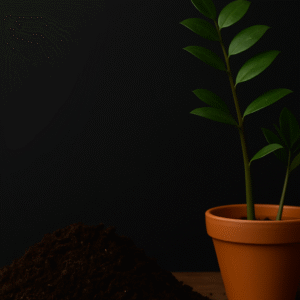

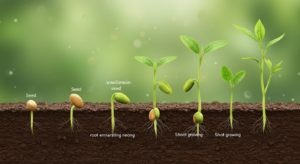
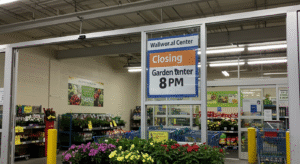
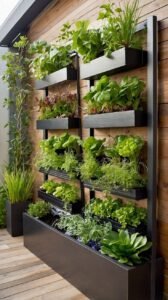
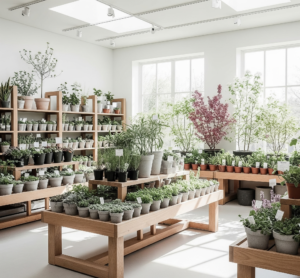
2 thoughts on “How To Grow An Indoor Herb Garden”